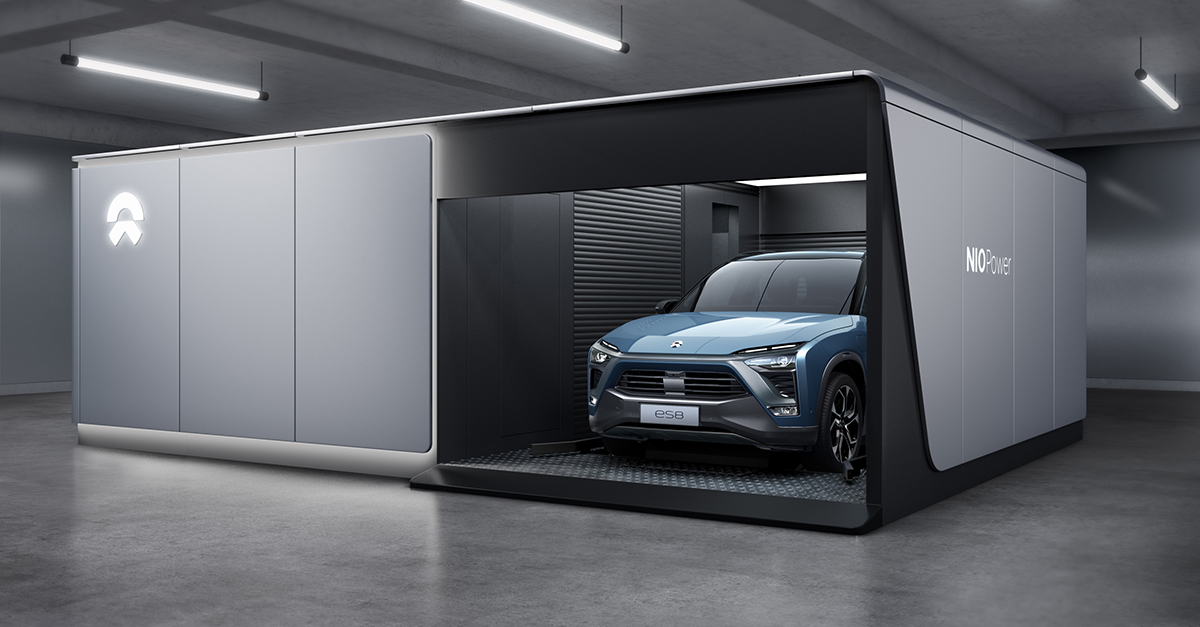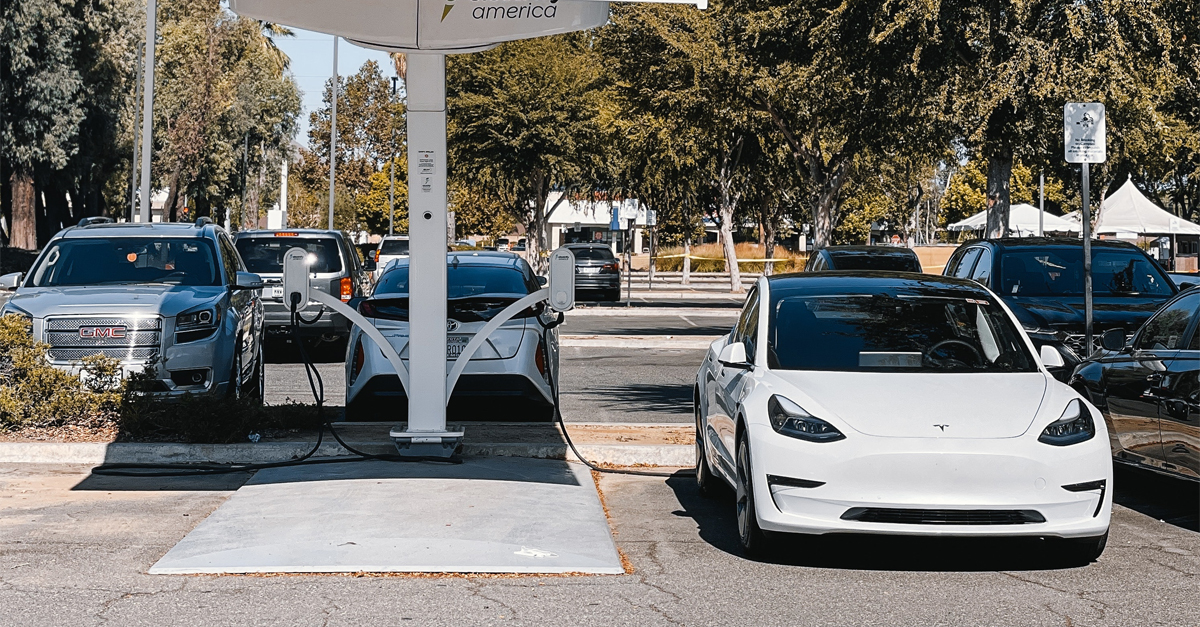Battery swapping is starting to gain popularity in some parts of the planet. China, in particular, has shown an increased emphasis on progressing the technology, with car manufacturer NIO driving the push.
NIO installed their first European battery-swapping station in Norway this year and plan to have a further 1,300 stations set up worldwide by 2023. Battery swapping isn't a completely new idea though, Tesla originally trialled the technology before settling for its supercharger network.
How does it work?
Battery swapping, in theory, is as simple as its name suggests. When your EV battery is depleted, you drive into a booth where a machine swaps out your dead battery for a new recharged one. The process can take as little as 5 minutes before you're good to go.
Drivers can either pay as they go or subscribe to a monthly fee. Pricing will be more expensive than standard electric charging however battery swapping will still be cheaper than filling up with petrol.
What are the positives?
The main attraction to battery swapping is how quick it is. A swift 5 minute stop at a swapping station, where you don't even have to leave your vehicle, is just as convenient as filling up at a traditional petrol station. If this infrastructure could be widely established then range anxiety would become a thing of the past.
Being able to get charged quickly also means that EVs become a more viable option for those who don't have a driveway or charging facilities at work.
Battery swapping would also make EVs more cost-effective because you'd be able to buy the car separate from the battery which is the most expensive component. NIO's ‘Battery-as-a-Service’ option allows drivers to pay a monthly sum for a set amount of 'swaps' each month.

Frequent battery changes mean that electric vehicles won't get stuck with an old declining battery - this makes second-hand models much more appealing. Any battery defects will also become easier to spot and manage.
If battery swapping infrastructure became well established then important recycling networks would be easier to implement and sustain too.
What are the negatives?
So far battery swapping sounds too good to be true, so what's the catch?
The main issue is cost. Swapping stations are very complicated systems that are expensive to build. Batteries are expensive too and every station would need spares to cope with the demands of customers.
Implementing a network of these stations would cost huge sums of money and might not be worthwhile considering alternative charging methods are getting faster and more established every year.
The latest EV charging systems and 350kW ultra rapid DC chargers can fully charge the newest long-range EVs in under half an hour. In some cases, as much as 300 miles of range can be gained in as little as 20 minutes.
Lightning-quick charging speeds like this raises the question as to whether battery swapping facilities would be a wise investment at this stage in the game.

Battery swapping would also require a fundamental change in how electric vehicles are manufactured. For this service to be effective, EVs would need a standardised battery design and set up, to make swapping quick and easy.
This would not only require manufacturers to agree upon a new battery standard, but it would also change how electric cars are marketed.
Companies like Tesla, Hyundai, Volkswagen and Lucid pride themselves on their advanced battery technology. Competing to make bigger and better batteries for their vehicles is one of the key elements of EV development.
Agreeing upon a standard battery design would mean sacrificing a competitive edge on rivals as well as wasting years of investment and development. This makes an agreement between carmakers seem unlikely.
Will it replace charging?
NIO is currently demonstrating success with its battery swapping facilities over in China, which comes in part due to government backing. These stations are only compatible with NIO vehicles which gives the brand its own unique selling point. In light of their first European battery swapping facility, it seems inevitable that NIO's network will continue to grow across the continent, especially given their signed agreement with Shell in December last year.
Geely, another Chinese manufacturer, is also getting in on the act. Last year the manufacturer, which also owns Volvo and Lotus, announced plans to build 5,000 new swap stations.
For other carmakers though, battery swapping looks a long way off. A commitment to developing bigger batteries and faster chargers remains at the forefront of most engineering decisions and there's confidence that ultra rapid charging technology will become more widely available.
Unless more key players decide to buy into NIO's battery swapping approach in the coming years, don't expect to see battery swapping at your local supermarket any time soon.








